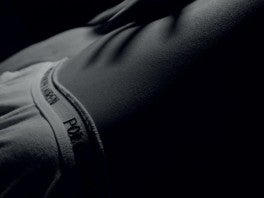Black and White Top Tips Page 2
4 Look for texture
B&W may not be the ideal medium to capture colourful subjects, but it’s perfect for highly textured ones. Texture adds an intensely descriptive quality to an image that colour can’t rival. Thanks to that primeval urge to touch, texture can be the complete subject of a composition. Texture is best emphasised by oblique lighting glancing across the surface.
 5 Walk the line
5 Walk the line
Black and white emphasises form, tone and texture. Lines, curves and shapes are brought to the fore, so it’s ideal for creating images that focus on the graphic nature of the subject. Lines in an image (such as walls, fences, roads and so forth) that lead the eye from the foreground of the scene to the middle distance will draw the eye into the frame, while horizontal strokes draw the eyes across. Vertical lines traditionally enhance a sense of depth, while diagonals will inject drama and excitement. Practice trying to visualise your scene in terms of lines and shapes.
6 Low key
Low-key images are comprised predominantly of dark tones, with few bright areas. They usually place an emphasis on deep shadows. The effect is achieved through appropriate lighting and careful exposure selection (meter for the highlights to darken the midtones and shadows). Levels control can also be used at the editing stage. Zonia Zena used a low-key approach for this self-portrait:
 ‘At the time this was taken, I was very into self-portraiture and also nudes. I wanted to do something different. I like to play a lot with the lighting, and how it reacts and plays on the skin fascinates me greatly. I wanted to add a special something. I found these old pair of Polos briefs in my drawer, and said to myself… “why not?”‘
‘At the time this was taken, I was very into self-portraiture and also nudes. I wanted to do something different. I like to play a lot with the lighting, and how it reacts and plays on the skin fascinates me greatly. I wanted to add a special something. I found these old pair of Polos briefs in my drawer, and said to myself… “why not?”‘
7 High key
High-key and low-key photographic techniques represent the most extreme treatment of contrast to enhance the atmospheric qualities of a photograph. High key is based on the suppression of contrast and shadows while promoting high levels of brightness and exposure. By using diffused lighting to avoid harsh shadows, and exposing for the darker areas so that the midtones are lightened, a high-key effect can be achieved – though be careful to avoid blowing the highlights. Use Levels in Photoshop (see page 80), perhaps with judicious use of the highlight/shadow control to achieve the high-key look without losing detail.
8 In the background
Busy subjects or compositions will benefit from being shot against a simple, undistracting background, preferably one that offers a favourable contrast to the tones of the main subject. Shooting mono reduces the distraction factor of brightly coloured or patterned backgrounds.
9 Glad to be grey
Unsure when to go mono? Subjects that are in reality naturally low in colour – such as buildings, snow scenes or metallic objects – will often benefit the most from the defining quality that desaturation brings.




